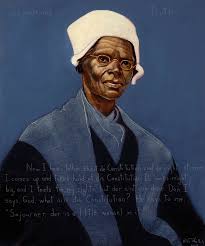Sojourner Truth: Slavery in Rural New York and the Fight for Freedom
Introduction
Born Isabella Baumfree in Swartekill, New York, in 1797, Sojourner Truth became one of the most prominent voices in the abolitionist movement and the fight for women’s rights. Her life narrative demonstrates the tenacity of people who opposed oppression and captures the complicated and frequently cruel realities of slavery in rural New York. Truth’s early life, her experiences in slavery, her journey to freedom, and her legacy as a potent social justice activist are all examined in this essay.
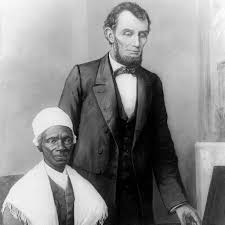
Life and Enslavement
- Background and Family
James and Elizabeth Baumfree, both enslaved, were the parents of Isabella Baumfree. Her mother was African American, while her father owned slaves in the Netherlands. Isabella was born into a system that valued her labor over her humanity and treated her like property. She had other siblings, but the family was frequently split apart, which is a common tragedy in the life of those who were slaves.
- Life as an Enslaved Person
Isabella was compelled to labor on the farm from an early age, caring for the animals and doing housework. When she was nine years old, she was sold to a new owner and subjected to cruel treatment and mistreatment. As Isabella grew older, she also had to bear the stress of being coerced into marrying another enslaved man, which led to the birth of multiple children.
- Rural Slavery in New York
In contrast to the Deep South, where massive plantations predominated, slavery in New York was different. Slaves in rural regions were frequently employed on smaller farms and performed a wider range of tasks. Despite New York’s eventual abolition of slavery, many people continued to live in bondage until the 1820s. For those pursuing freedom, this time of transition produced a tense and uncertain atmosphere.
Path to Freedom
- Religious Awakening
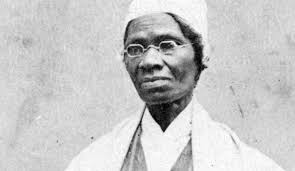
Isabella managed to break free from slavery in 1826 by taking advantage of New York’s steadily strengthening emancipation laws. She took sanctuary with a Quaker family, who helped and supported her. She had a deep spiritual awakening during this period, which inspired her to choose the moniker Sojourner Truth to represent her quest to travel and expose injustice and enslavement.
- Legal Battles for Her Children
Truth’s quest to reunite with her son Peter, who had been sold into slavery in Alabama, was one of the pivotal events of her trip. She won her son’s return in a valiant court struggle, making her one of the first Black women to successfully oppose a white man. She became more aware of the hardships enslaved families experienced as a result of this event, which also inspired her to become an activist.
Activism and Advocacy
- Abolitionist Movement
Truth began to speak out against slavery, joining the abolitionist movement. Her eloquence and personal story resonated with audiences, and she quickly gained recognition for her powerful oratory skills. She traveled throughout the North, sharing her experiences and advocating for the emancipation of enslaved individuals.
- The “Ain’t I a Woman?” Speech
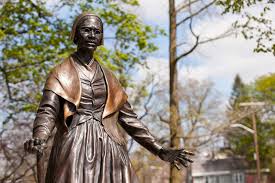
One of Truth’s most famous speeches, delivered at the Ohio Women’s Rights Convention in 1851, addressed the intersection of race and gender. In her iconic “Ain’t I a Woman?” speech, she challenged the prevailing notions of femininity and womanhood that marginalized Black women. She highlighted the double oppression they faced, arguing for equal rights and recognition of their strength and resilience.
- Collaboration with Other Leaders
Throughout her activism, Truth collaborated with notable figures such as Frederick Douglass and Susan B. Anthony. She advocated for the inclusion of Black women in the women’s rights movement and stressed the importance of intersectionality long before the term was coined. Truth’s efforts contributed to the broader dialogue around civil rights and women’s suffrage.
Experiences of Slavery in Rural New York
- Daily Life and Labor
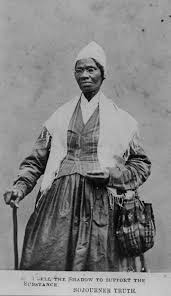
Slavery in rural New York was characterized by a range of labor-intensive tasks, from farming to domestic work. Enslaved individuals often worked long hours under harsh conditions, facing physical and emotional abuse. Women like Truth were particularly vulnerable, as they were often subjected to sexual exploitation alongside their labor.
- Community and Resistance
Despite the oppressive environment, enslaved individuals often formed tight-knit communities, relying on one another for support. They created informal networks to share information, provide assistance, and strategize for escape. These acts of resistance, both subtle and overt, played a crucial role in undermining the institution of slavery.
- Cultural Expressions
Enslaved individuals in rural New York also expressed their culture through music, storytelling, and religious practices. Spirituals and folk tales became important means of preserving cultural identity and offering solace amid suffering. These cultural expressions reflected the resilience of the human spirit and the unyielding desire for freedom.
Legacy and Impact
- Influence on Civil Rights
Sojourner Truth’s activism laid the groundwork for future generations of civil rights advocates. Her commitment to equality and justice transcended her era, influencing later movements for racial and gender equality. Her speeches and writings remain significant in contemporary discussions about social justice.
- Symbol of Resilience
Truth’s life story serves as a powerful testament to the resilience of enslaved individuals and the ongoing struggle for justice. She embodies the strength of those who resisted oppression, both in her actions and her words. Her legacy continues to inspire activists today, reminding us of the importance of speaking truth to power.
- Cultural Recognition
In recent years, Sojourner Truth has been recognized as a cultural icon. Statues, schools, and institutions have been named in her honor, reflecting her enduring impact on American history. Her contributions to the abolitionist movement and women’s rights are now celebrated in textbooks, museums, and public commemorations.
Conclusion
Understanding the intricacies of slavery in rural New York and the larger struggle for freedom requires knowledge of Sojourner Truth’s life and legacy. From her early days of slavery to her rise to prominence as a vocal supporter of women’s equality and civil rights, Truth is a living example of the resilience of the human spirit in the face of hardship.
Her tale demonstrates how race and gender intertwine in the pursuit of justice, and her demands for equality are in line with current social change initiatives. Her contributions serve as a reminder to us of the value of defending justice and the eternal strength of the truth in the continuous fight for equality and human rights. Sojourner Truth continues to be an encouragement to everyone and a sign of tenacity.
